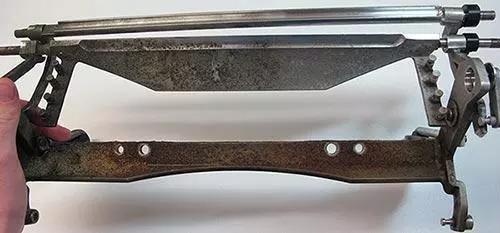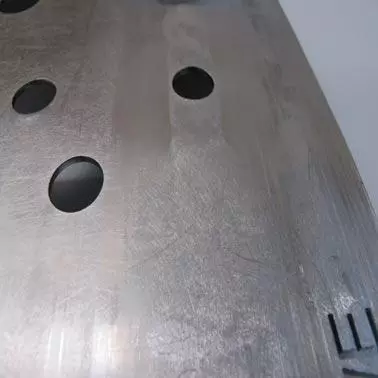Ultrasonic Cleaning for the Food Industry
Ultrasonic cleaning technology represents a significant advancement in maintaining hygiene and efficiency within the food industry. By leveraging the power of sound waves to achieve thorough and precise cleaning, it addresses the unique challenges posed by food processing equipment and surfaces. With its ability to reduce chemical usage, preserve equipment integrity, and enhance productivity, ultrasonic cleaning is poised to remain an indispensable tool for ensuring food safety and quality in the years to come.
Ultrasonic cleaning ensures thorough sanitation of all food contact surfaces, including utensils, conveyor belts, and containers, preventing cross-contamination and complying with safety regulations. It efficiently removes residues from processing equipment like tanks and pumps, maintaining hygiene standards and preventing microbial growth. Additionally, it provides a non-destructive cleaning method for packaging materials, such as trays and seals, ensuring they meet hygiene standards without compromising integrity.
Cleaning Industrial Food Strainers
The customer's standard necessitates the complete absence of any contamination in the strainers, which are composed of steel. Prior to cleaning, these components were found to be contaminated with food debris.
The tank initially contained a 5% concentration of Decoclean 440, which was degassed and allowed to reach the required temperature. The strainer was then placed in a basket and submerged in the tank, undergoing a 10-minute cleaning cycle, during which the contamination began to soften. Subsequently, the concentration was increased to 10%, and the strainer was returned to the tank for further cleaning. The entire cleaning process for the strainer lasted 60 minutes in the ultrasonic wash tank. Following this, the part underwent rinsing in DI water for 3 minutes and a subsequent 10-minute session in the hot air dryer.
Before cleaning

After cleaning

Before cleaning

After cleaning

Cleaning Food Packaging Tooling
As per the customer's requirements, the packing tooling must be entirely free from any form of contamination. This tooling comprises stainless steel and aluminium materials. Prior to cleaning, the tooling was found to be contaminated with staining, discolouration, and remnants of food seasoning.
For testing purposes, every part underwent individual processing. They were placed into a basket and immersed in the wash tank, where they were subjected to a cycle lasting 5-20 minutes. Following this, the parts underwent a rinsing cycle lasting 3 minutes, which is crucial for neutralising the cleaning agent from the initial wash and eliminating any remaining debris. Subsequently, the parts were dried using the Versa 120 dryer, set at 70°C for 5 minutes.
Before Cleaning

After Cleaning

Before Cleaning

After Cleaning

Removing food deposits from Stainless Steel
According to the customer's specifications, the platens must be completely free from any form of contamination. These platens are made of stainless steel and were found to be contaminated with food deposits before the cleaning process commenced.
This component was cleaned in an upright position for a duration of 10 minutes, facilitated by its size. The cleaning process initiated immediate removal of contamination once the sonics commenced. Subsequently, the part underwent a 3-minute rinse in a dedicated tank, emphasising the importance of this step in achieving a thorough clean by eliminating any residual debris and neutralising the cleaning agent to prevent staining and damage. Finally, the component was dried using a hot air dryer unit set at 70°C for 5 minutes. Given the substantial amount of contamination present on the parts, we recommend implementing a filtration system in the wash tank to extend the lifespan of the cleaning fluid.
Before Cleaning

After Cleaning

Cleaning Plate Heat Exchanger used in the Food Industry
Plate heat exchangers are vital in the food industry for pasteurisation, sterilisation, cooling, and heating processes. They ensure uniform heating and rapid cooling, preserving food quality and safety. Additionally, they're used for condensing steam, evaporating liquids for concentration, and regulating temperatures in equipment. In summary, plate heat exchangers play a crucial role in efficient and safe food processing.
The customer's primary criterion is to ensure that the plate heat exchanger is entirely free from all forms of contamination. The material of concern is steel, and the specific component requiring cleaning is the plate heat exchanger. Prior to cleaning, the contamination observed includes staining and scale buildup on the surfaces. The goal is to thoroughly remove these contaminants to restore the equipment to its optimal condition and ensure efficient heat exchange processes.
The plate heat exchanger underwent cleaning in a compact benchtop ultrasonic cleaning unit (K-Sonic 12), positioned vertically due to its high concentration. Tap water was initially filled into the bath and then diluted with Solvit 4 cleaning fluid. The component was placed upright and subjected to a one-hour cycle, followed by rinsing and inspection. While one side was completely cleaned, the other exhibited slight discolouration and heavy contamination. Subsequent cleaning cycles of 60 minutes each were conducted until achieving 100% cleanliness. The ultrasonic cleaning process lasted a total of 8 hours, eliminating all staining and scale. Increasing the concentration of the cleaning solution can reduce cleaning durations.
Before cleaning

After cleaning

